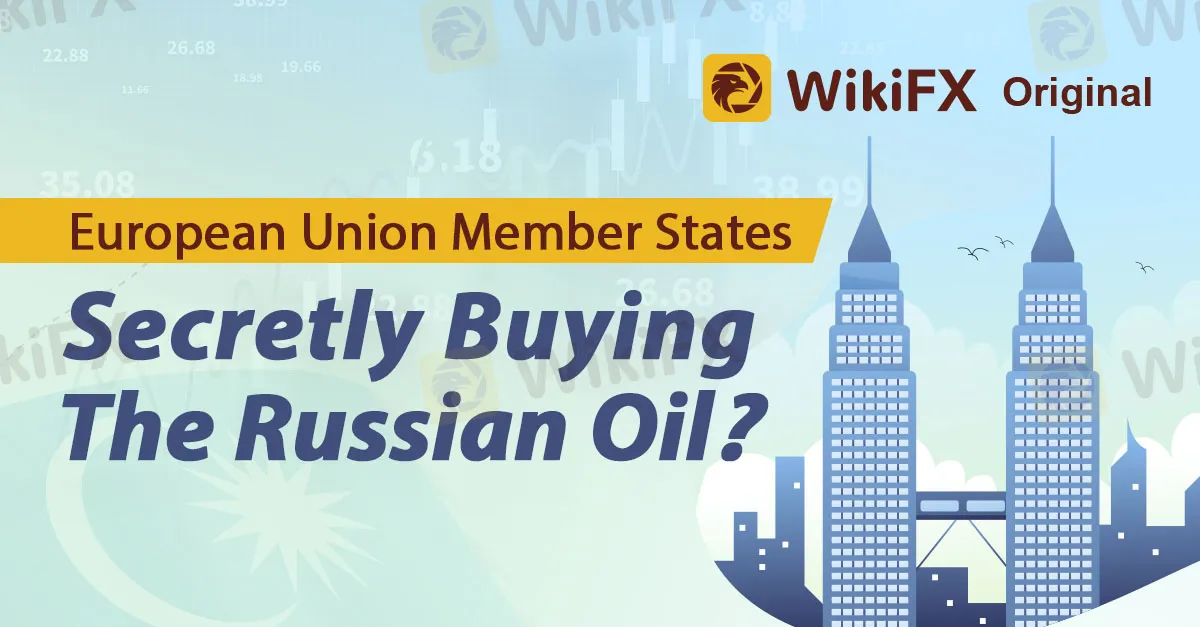简体中文
繁體中文
English
Pусский
日本語
ภาษาไทย
Tiếng Việt
Bahasa Indonesia
Español
हिन्दी
Filippiiniläinen
Français
Deutsch
Português
Türkçe
한국어
العربية
European Union Member States Secretly Buying The Russian Oil?
Abstract:It seems like some countries in the West are secretly buying the Russian oil despite the imposed sanctions. How are they doing this and why?

<WikiFX Malaysia Original – Editor: Fion>
As of writing on the afternoon of 25th April, oil prices extended their decline. The U.S. crude oil broke below the $100 mark while the brent oil is fighting to remain above $101. This price drop is due to the slowing down of global economy, rising interest rates, and the prospect that the Covid-19 would continue to affect demand levels.

Meanwhile, a new topic to watch out for currently is that some countries in Europe are suspected of buying oil from Russia despite its imposed sanctions. The paradoxical scenario here is that while the European Union plans to further tighten its energy ban on Russia, it looks like Russian oil exports to EU countries have also been rebounding secretly.
On the 22nd of April, the Wall Street Journal reported that Russia has recently increased its oil shipments to its main customer, the European Union. In recent weeks, the Netherlands, Greece and other European countries have also been purchasing more of the Russian oil in the month of April.

It is reported that oil purchases were shipped from Russian ports to “unknown destinations” with more than 11.1 million barrels of oil loaded onto tankers with no specified route. According to TankerTrackers.com, a website that tracks and reports shipments of crude oil in several geographical and geopolitical points of interest, oil exports from Russian ports to EU member states have risen to an average of 1.6 million barrels per day in April, compared to an average of 1.3 million barrels per day in March.
The reason behind this could be that Western energy companies and oil brokers desperately need oil to keep their economies afloat and prevent fuel prices from further pushing up inflation figures that have already surpassed historical peaks. However, due to those sanctions imposed on Russia by the European Union, they had no choice but to “trade quietly”. The concern right now is that should this situation further continue, there could be a rise of an opaque market.
Morgan Stanley raised its estimate for Brent oil prices in the third quarter by $10 to $130 a barrel, citing a “widening supply gap” this year due to reduced supply from Russia and Iran, which could outweigh the impact of short-term demand disruptions.
A Morgan Stanley report dated April 21 said, “Oil markets are struggling with downward revisions to GDP and the massive release of strategic oil reserves.” Moreover, Morgan Stanley sees a shortfall of about 1 million barrels per day lasting until the end of 2022, as deteriorating interest in buying Russian oil and a lack of progress in reviving the Iran nuclear deal could exacerbate supply problems. The bank also lowered its oil demand growth forecast to 2.7 million barrels per day from 3.4 million barrels per day.
<WikiFX Malaysia Original – Editor: Fion>

Disclaimer:
The views in this article only represent the author's personal views, and do not constitute investment advice on this platform. This platform does not guarantee the accuracy, completeness and timeliness of the information in the article, and will not be liable for any loss caused by the use of or reliance on the information in the article.
Read more

What Is Indices in Forex? A Beginner’s Guide to Trading Forex Indices
Understand what indices in forex are, how DXY works, key differences vs pairs, pros/cons, and where to trade CFDs—beginner-friendly, expert-backed guide.

Malaysian Finfluencers Could Face RM10 Million Fine or 10 Years in Prison!
A new regulatory measure by the Securities Commission Malaysia (SC) is set to change the country’s online trading and financial influencer landscape. Starting 1 November 2025, any trader or influencer caught promoting an unlicensed broker could face a fine of up to RM10 million, a prison sentence of up to 10 years, or both.

Juno Markets: A Closer Look at Its Licenses
When selecting a broker, understanding its regulatory standing is an important part of assessing overall reliability. For traders seeking to protect their capital, ensuring that a platform operates under recognised and stringent oversight can make all the difference. Keep reading to learn more about Juno Markets and its licenses.

Complaints Against Weltrade | Traders Can’t Get Their Money Back
Opening a trading account and watching your capital grow can feel exciting and full of promise until the moment you realise you cannot get your money back. That’s when the dream turns into a nightmare. Recent complaints submitted to WikiFX reveal an unsettling pattern seen at Weltrade where deposits vanish, withdrawals stall for days or even months, and support channels lead nowhere.
WikiFX Broker
Latest News
What Is Indices in Forex? A Beginner’s Guide to Trading Forex Indices
How to Use Retracement in Trading
CySEC warns the public against 17 investment websites
Robinhood Moves Toward MENA Expansion with Dubai DFSA License Application
FBI Issues Urgent Warning on Crypto Recovery Scams
What Is Forex Trading Fee? A Beginner’s Guide
Understanding UAE’s Financial Market Regulation: SCA and DFSA
Scam Alert: Know the Risky Side of InstaForex in India
Going to Invest in FXCL? Move Back to Avoid Scams & Losses
IBKR Lite Singapore Debuts with Zero-Commission US Stock Trading
Currency Calculator


